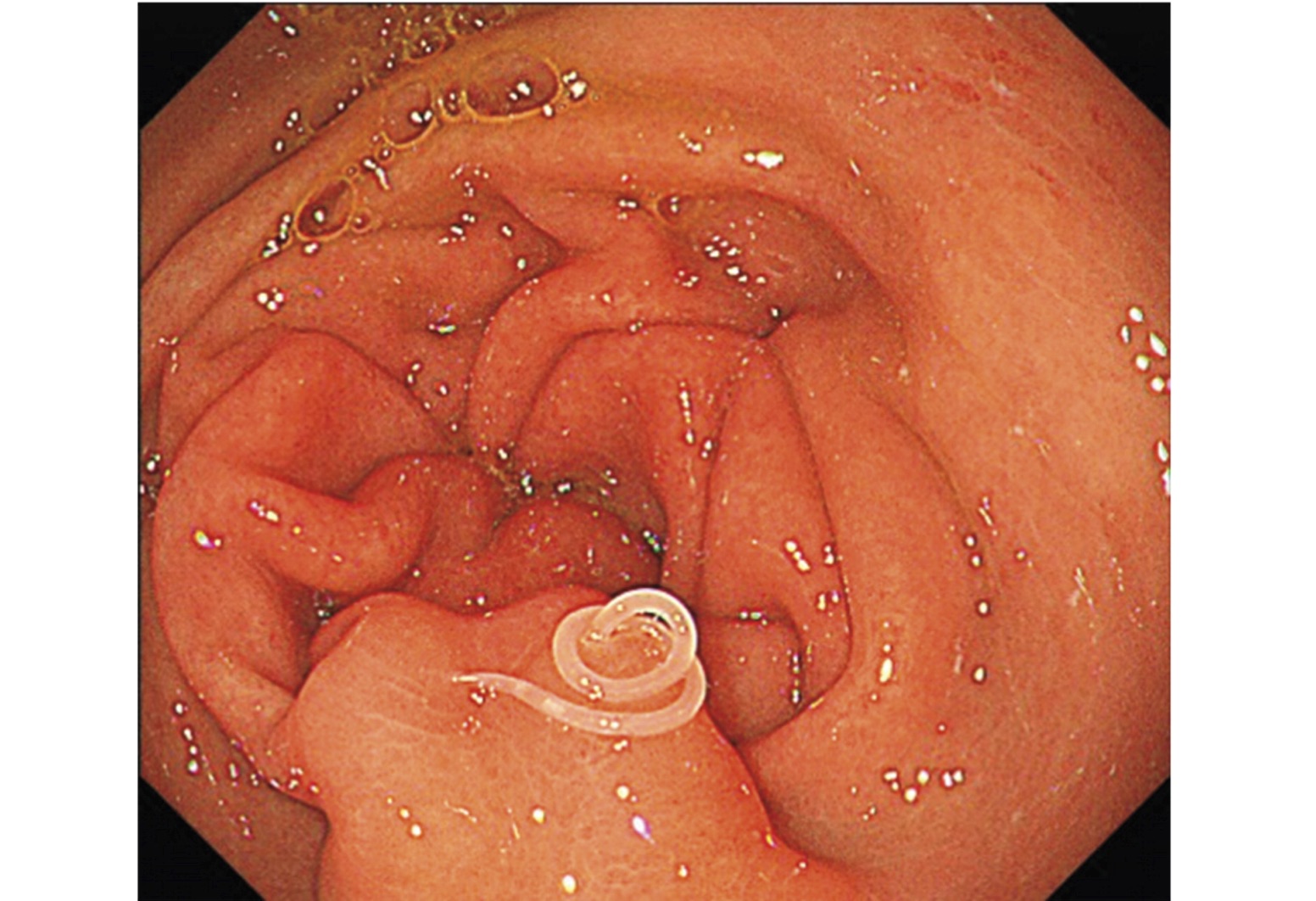Parasitic Worms Burrow into Walls of Woman's Stomach After Meal

A woman in Japan went to the hospital after eating a meal of raw fish that turned out to contain an extra, unwanted ingredient: parasitic worms that eventually burrowed into the walls of her stomach.
The 36-year-old woman went to the hospital after two days of chest and stomach pain, nausea and vomiting, according to a recent report of her case.
She told the doctors that the pain had started about 2 hours after she ate uncooked salmon, the doctors wrote in their report, published Wednesday (Aug. 17) in the New England Journal of Medicine.
The doctors ran several tests, including some to make sure there were no problems with the woman's heart, due to the location of the pain. The tests revealed no heart problems; however, an imaging test showed that the walls of her stomach had thickened. [Here's a Giant List of the Strangest Medical Cases We've Covered]
When the doctors inserted a small camera into her stomach, they found the culprits: 11 anisakis larvae, a type of parasitic roundworm.
Anisakis worms cause an infection called anisakiasis, said Dr. Uichiro Fuchizaki, a gastroenterologist at Keiju Medical Center in Japan who treated the woman and a co-author of the report. People can get infected by eating raw fish or undercooked seafood that contains the worms, according to the report.
The worms can burrow into the walls of the stomach or the small intestine, though it is much more common to find them in the stomach, Fuchizaki said. About 95 percent of anisakiasis cases are in the stomach, he told Live Science.
Sign up for the Live Science daily newsletter now
Get the world’s most fascinating discoveries delivered straight to your inbox.
When the worms burrow into the walls of the stomach, the symptoms usually develop within several hours of eating contaminated fish, Fuchizaki said. If the infection occurred in the small intestine, however, the symptoms wouldn't start until one to five days later, he said.
Some people may notice the worms even sooner than a few hours after eating raw fish — in some instances, people actually feel a tingling sensation in their mouth or throat while they are eating, which is caused by the worm moving around there, according to the Centers for Disease Control and Prevention. Some people may be able to remove the worm with their hand or by coughing, the CDC says. Vomiting, which is often a symptom of anisakiasis, can also expel the worms, the CDC says.
In most cases, people experience pain and other stomach problems because the worms are damaging the tissue of the digestive tract, Fuchizaki said. But some people may be allergic to the worms, and experience an allergic reaction if they eat them, he said.
Because the worms do not reproduce in humans, they eventually die and cause an inflamed mass, according to the CDC.
In the woman's case, doctors used a camera and forceps (a tool that looks like tweezers) to remove the 11 worms from the the woman's stomach. Some of the worms were found in the area where the esophagus meets the stomach, according to the report. This area is located close to the heart, which is why the woman had chest pain. [Images: Human Parasites Under the Microscope]
Most cases of anisakis infection involve only one or two worms, Fuchizaki said.
After removing the worms, the woman's symptoms went away, according to the report.
Anisakiasis is more commonly found in Japan, where eating raw fish is popular, according to the CDC. But it is expected to become more common in other parts of the world as the popularity of raw fish dishes grows, Fuchizaki said.
Originally published on Live Science.

Flu: Facts about seasonal influenza and bird flu
What is hantavirus? The rare but deadly respiratory illness spread by rodents











